Lots of assorted odds and ends for you this week, so let’s get right into it, shall we?
I came across this obscure bit of video this past week and thought that I’d go ahead and share it with all of you. It’s a half-hour documentary about the way in which manga culture permeates Japanese life. The interesting thing is that it was created in 1982, at a time when manga simply wasn’t widely known in the United States. So this is a fun little time capsule of the era in which it was made:
No great surprise, the comments and questions generated by last week’s Newsletter turned a bit political. Fortunately, for the most part everybody made their points respectfully and without vitriol. I’m not really looking to make the political landscape of the country a regular topic in these parts, though it will inevitably creep in from time to time as the zeitgeist demands. Anyway, as long as everybody continues to be civil, we shouldn’t have a problem.
Jeff Ryan
So is Vance Astrovik the most obscure Marvel character who went from going years without being seen to showing up in two different monthly Marvel titles (NW and the Guardians of the Galaxy)? Can the hivemind think of someone more obscure who went from zero appearance to two monthlies?
The Punisher comes to mind, Jeff. As does Squirrel Girl. And even the Sub-Mariner if we’re talking about the 1960s and 1970s. I don’t know that any of these selections quite matches Vance’s achievement in this arena, but they’re certainly in the same general ballpark.
Max More
"Like pretty much everybody else, I’m thoroughly exhausted and preparing to face a future that suddenly looks far more apocalyptic than most people even realize." So, "pretty much everybody" excludes most of the population? Personally, I am relieved that the lesser of two evils won. It's unfortunate that politics has to worm its way into a discussion of comics.
I think you’re maybe operating under a misconception, Max. Go back and look at the title of this Newsletter again and you’ll find that it doesn’t say anything about comics. Sure, we talk about comic books a lot, especially given that it’s my vocation. But this is really a place for me to speak about anything I might feel like speaking about. And I certainly get it if that isn’t something that you want to deal with on a Sunday morning. So to you, and to anybody else who might be feeling similarly, the unsubscribe button isn’t too difficult to find.
Gregory Wright
I forgot that you got the last two issues of POWER OF TERROR out the door. I wish you had edited the entire series...
I have to say that despite the fact that putting the Thor splash of the New Warriors on my dartboard was something I was very likely to do...I did not have it on my dartboard. Nope. I did, as did most of the office mock the hell out of the concept and the name. We were certain it would suck, especially with shoe-horning SPEEDBALL in there...who was also mocked at that time.
Yes indeed FABIAN is the one guy who thought this would work and had the idea of how to do it. Oddly he wasn't the first choice and had to wait quite a while to get the gig...and Mark Bagley....also not a first, second or third choice. Myself, Ralf Macchio and Bob Budiansky (likely others) all championed Mark to do the book. Mark had done a lot of terrific work and saved all our butts with deadlines and it was past time he got his shot. But the editor wanted to hire established SUPERSTARS for the writing and pencilling. Not that he didn't like Fabian's work or Marks work...in the end he couldn't hire the "stars" and "settled" for Fabian and Mark...who proved us ALL WRONG with the first issue, and the first pages Mark sent in changed everyone's tune about this book. I regard what Fabian and Mark did with this book as inspiration for every concept that seems lame, but with enough positive work can be great. It's a benchmark title for me. Although I'm sure Fabian was on my dartboard at some point.
I know for sure that that New Warriors spread from THOR was up on the dartboard in that back corner office, Greg, the one that eventually became mine. So if it wasn’t put up there by you or your assistant, maybe it was Marcus McLauren, who occupied that office when I first started at Marvel on an employment basis.
Somewhere in my files, I’m pretty sure that I still have all of the original NEW WARRIORS proposals that I inherited from Danny. So while I wouldn’t want to share any of them publicly, assuming I could dig them out, I could at least give people a sense as to who pitched for the title and the broadest strokes about what their take involved. Looking over them ,it’s pretty clear why Fabian got that gig.
Jordan L
Would you and your team ever consider moving the X-Mentions spread to the back of the books?
Not really, Jordan. And the reason is that I want people to actually read it, and that’s a lot more likely when it’s someplace in the book where they’re likely to see it. Admit it, how often do you even look at that section of ads in the back of the issue?
Ian
Is there currently an Art Director or similar role at Marvel? I’ve seen such a wide range of styles, and in my opinion quality, that I often wonder if there is anyone guiding things art-wise
I appreciate that there isn’t a singular “house style”, but the overall story-telling and figure drawing seems inconsistent to me.
There isn’t an art director for Marvel publishing per se, Ian, and there hasn’t been one since the very late 1990s. But even if there was, it was never the job of an art director to gatekeep which artists would get to work at Marvel. That’s always been the purview of the individual editors, with the Editor in Chief having veto power, of course. In terms of active recruitment, we have an entire Talent Management division that looks at portfolios and provides feedback to applicants who might have the talent to do the job professionally at some point.
Iioo
What's the point of tying a story about a mutant disease (wow, it's already 6 years since last one concluded) to Resurrection Protocols? It's not going to excite Krakoa fans, they're too busy pointing out holes in it, like the fact that Magneto's latest resurrection had nothing to do with The Five. It's not going to please people looking for new X-Men stories not tied to a 5-year hundreds-of-issues story they did not follow. Who is this for?
It’s a story, Iioo, so it’s for anybody who enjoys reading a story. I do feel like you’re (pre)judging a lot about a story that’s only just begun and about which very little is known. And Magneto was resurrected by the Five in the aftermath of INFERNO, so while they weren’t involved with his latest resurrection, he had definitely been resurrected through the typical Krakoan methodology prior to that.
Charles Williams
As part of your writeups would love to know what you thought the essence of it that worked so well (for a surprisingly long time) was, and why future iterations haven't captured it? For me, it felt like a moment in time that it's v hard to go back to the well on without an exceptional creator or pitch (like Runaways or Young Avengers). Would love New Warriors to get a Kieron Gillen or Rainbow Rowell equivalent run again.
I’m sure that we’ll get to this, Charles. To me, the essence of the original concept, the thing that made it distinctive and unique was the idea that these were young activist super heroes. In all honesty, having been foiled in my attempts to helm a NEW WARRIORS project over all the years since I last worked on the book in the 1990s, I pretty much migrated the guts of that core concept over to CHAMPIONS when that series launched under Mark Waid and Humberto Ramos. But I figured that was fair, as nobody who had done NEW WARRIORS in a few decades had ever come back to it. So CHAMPIONS was a lot like what my NEW WARRIORS revivals might have felt like.
Sergio Flores
I’m curious what insight you can provide on the DeFalco/Frenz run of Thor. It definitely was a tonal shift from Walt Simonson’s run and I’m curious if the idea of doing it with a kind of throwback 60s Marvel-ish tone came first and then DeFalco and Frenz seemed to fit that style, or if it was the other way around with them getting the assignment and deciding to go in that direction?
That DeFalco/Frenz era of THOR is a really good run, Sergio, though it was one that took me a while to really appreciate. And I expect that’s simply a matter of the fact that it was the follow-up to Walt Simonson’s time on the series. Walt’s tenure was progressive and switched up a number of status quo elements. Especially with the very deliberate callback to the style of the Stan Lee/Jack Kirby era of the title, the DeFalco/Frenz run felt to me a bit regressive, undoing and lot of the changes that Walt had made in favor of a classic status quo. That all said, the whole run is well-crafted, and especially when Tom and Ron get up to making Eric Masterson Thor, it very much starts to do its own thing. But the idea of approaching the series that way no doubt came from Tom and Ron themselves, and perhaps a bit of editor Ralph Macchio. Had Tom and Ron not been the creative team, the series likely wouldn’t have been done in that manner.
Biggu
I have another question this time more about being a fan and editor and that side of things because I remember earlier you said you had strong feelings about Bucky coming back. How do you reconcile doing things that are good for business but maybe go against what you feel is “right” For a character or story? As an outlandish example let’s say a the next MCU movie has Spider-Man inject himself the x-gene for reasons and he is now a mutant and gains additional gecko powers, changing his name to Gecko-Spider-Man. The movie is a huge hit and people LOVE Gecko-Spider-Man and he becomes a worldwide phenomenon. How does an editor who’s job it is to make sales reconcile their personal belief as a life long fan of Spider-Man that Gecko-Spider-Man is the worst thing to ever happen, that just the thought of changing printing a story about Gecko-Spider-Man makes them want to puke, but that NOT doing a Gecko-Spider-Man book or something that ties into or references it is like leaving money on the table? You’d don’t have to give a specific example of when this has happened. It just interests me of how an editor, who is likely a fan, knows when to die on a hill to preserve what they think is right for a character based in their opinion as a passionate fan or when to give in and say “yeah, I hate this, but audience’s love it and it’s gonna sell well, so I have to swallow my pride and live with it.” Obviously it’s a no brainer that a good editor doesn’t let their personal biases affect their job but I’m talking more about when your opinions as a fan inform what’s good for the character business wise as well. Where’s the line, how do you know when to stand your ground because you’re confident chasing a trend do a disservice to a character, or when you have to swallow your pride and chase the trend and go with the sale
This doesn’t really happen all that often, Biggu, as while there may be any number of things that I wouldn’t let my creators do on the books they work on, most of the people that I hire aren’t the sorts of folks who are going to make ill-considered decisions for shock value, or whatever. That all said, the reality is that I don’t own the characters of the Marvel Universe, Marvel does. And so, if the organization (or somebody placed higher up in it) decides that a change is to be made and I disagree with it, assuming that I am unsuccessful in convincing them as to why that change would be a bad idea, my objective has to switch to focusing on telling the best version of that story that it’s possible to tell. But if you’re talking about something that’s already been done somewhere else and is already popular with a big segment of the audience, then it’s even more of a no-brainer than before, in that without selling comics, we won’t stay in business to be able to make comics. So, for example, I don’t really love the fact that Agatha Harkness has been rejuvenated and transformed into virtually an entirely new character these last couple of years. But I’m well aware that Agatha had a sum total of zero fans before that change, and that an awful lot of people are incredibly invested in her as portrayed by Kathryn Hahn. So following suit in the comics simply makes good sense.
Robert Carlin
To follow up on the quote ("yeah, I hate this, but audiences love it and it's gonna sell well")... is there ever a time when the quote becomes "yeah, I hate this, and the audience is gonna hate it/we'll get so much free publicity that it's gonna sell like wheatcakes"?
Somebody has to like a given idea for it to be give a go-ahead, Robert. Whether that’s the editor, the editor in chief, the publisher, whoever. And it’s definitely better to get an outraged reaction from the audience than deafening silence. In the first instance, it means that people are reading, in the second, even if they are, they aren’t engaged. And engagement sells comics. But just because I know that doing a story in which Spider-Man kills somebody is likely to be embraced by a bunch of readers isn’t enough by itself to make me okay that story.
JV
What are your thoughts on recolouring old classic comics?
I was looking at the various editions of Batman Year one - and I find the new colours (even through they were by Richmond Lewis) - too strong and it feels off. I find this happens to comics I discovered in the 80s - it is almost not logical but based on some books from my youth.
I know the Neal Adams Batman reprints just seemed so garish to me. I am eager for some of the Masterworks editions coming out (Buscema Avengers and Mazzucelli DD) but I am afraid it will seem off to me (again a personal illogical perspective).
What are your thoughts Tom on recoloring, paper stock, etc - any good (or bad examples) you want to share?
I’m relatively laisse faire on this question, JV, as I like all kinds of different reprint projects. Back when I worked on the MARVEL MASTERWORKS books, though, I never liked that they were for years recolored without any reference being made to the original coloring in the classic book, The thought process there was that the original coloring was done at a time when the printing was limited, and it was often done without a lot of care. But I didn’t agree with that, and so when I took over the MASTERWORKS program, I made sure that we stopped doing that. But even there, the same coloring will look incredibly different on different paper stocks.
In terms of a good example, though it’s a format that’s limited in that it’s also costly, I really like those massive collections of early Marvel books that Taschen has been putting out. They go to the effort of not only scanning from the printed books but in trying to emulate the feel of the original paper stocks. Of course, those volumes retail for $100.00 or more. And they’re enormous, which makes them unwieldy for casual reading. Also, the fact that it came out that they sourced some pages in later editions from reprints and the like rather than the original books has limited my desire to own further volumes from them. Fortunately, much of this material is available in a variety of formats and on a variety of paper stocks, so depending on your preference, chances are you can find volumes that will fulfill you.
Chris Sutcliffe
When it comes to naming series, what do you weigh up when it comes to using an established title (like Uncanny X-Men, say) vs. a new one (Extraneous X-Men?). Obviously there is brand recognition involved, but also an expectation that a title named in a certain way will involve some kind of specific story (for example, if there was a Superior X-Men, I would assume some villains have taken over the roles of the X-Men). I'm curious what your thought process is here.
This tends to be a question that’s focused more on an individual project rather than a broad set of rules in general, Chris. but for example, when I was first outlining the various new X-Men books, EXCEPTIONAL X-MEN was conceived of as being NEW X-MEN, a title that I think summed up its contents well. But other folks in our sales and editorial teams pointed out to me that traditionally books called NEW X-MEN hadn’t really performed all that well, and so I instead went back to ground to come up with a new adjective for the new series. It was Assistant Editor Martin Biro who came up with EXCEPTIONAL.
Here’s my cover sketch for this week’s issue of EXCEPTIONAL X-MEN, which you can see was labeled clearly as NEW X-MEN back when it was drawn.
Taimur Dar
I'm curious if over years there's been any attempt to come up with a new superhero moniker for Hulkling? Don't get me wrong, I love the character and dig the name. But I'm sure a new reader might mistakenly assume by his codename he has some connection to the Hulk.
Not so far, Taimur, not to the best of my knowledge. And I don’t think readers thinking Teddy has a Hulk connection is a drawback especially.
Emmanuel Cabahug
I don't think it going to be apocalyptic as you might think. The American people have voted largely for this election is that they were not happy with the current administration's handling of the economy. A majority of Americans from the regular American family, minorities, and even LGB even turn out to vote for Don. I saw a video where a gays and lesbians were fed up with gender affirming care for underage children. They were okay with the gay marriage but when the Transgenders and others, force that on children to transition it upset them. There is a schism of the LGBTQplus after this election which is now just the LGB who have separated themselves from the Tplus (non-binary times). No rights are going to be taking away. Trump didn't took them away the last time. This Election cycle had 10 states with abortion on their ballot and 7 out of the 10 approved abortion measures. So, I respectfully disagree that the world is going to be apocalyptic. If you want apocalyptic, we didn't have wars in Ukraine or Israel the before Biden and Putin's threat of using nuclear weapons against NATO. I think the defeat of the Democrats was largely the mainstream media who continued to paint Donald J. Trump and his supporters as Nazis and white supremacists despite the fact that he has Black, Hispanic, Jewish, and Asian supporters, like myself (Filipino-American). I find it strange Trump himself have condemned white supremacist since late 1990s and early 2000s but the media and the liberal left continue to paint him as a white supremacist, fascist, and Hitler. The Americans who voted for Trump this election no longer believe that Trump is a racist. I think the fear mongering needs to end. No one's rights is going to be taken away. If you believe that, you just follow what the Leftist MSM tells you what to believe.
Write down the date and time that you said that, Emmanual. I hope that you’re right, but as a longtime New Yorker, I don’t think you really have any comprehension of who and what you’re dealing with. But everybody’s about to, like it or not. Good luck.
Will Shugg
I reread the Avengers/Invaders mini series from after Civil War recently, which I really enjoyed. I was wondering though what the story was with Dynamite Entertainment also having their logo on the cover. How did that come about?
At the time that that project was mounted, Will, Alex Ross was doing virtually all of his work for Dynamite, and so they were the ones who proposed doing an AVENGERS/INVADERS series of projects that Alex would be involved with on a creative level.
MB
Tom, can yall please, please, please, please, PLEASE cool it with the Savage Land Rogue variant covers? We get it, she's sexy and she's half-naked. Do we really need to objectify her this much? Do we really need ten billion Savage Land Rogue variants for every comic book she appears in? Can we have her in literally any other outfit?
See the above answer about what sells versus what a particular editor likes, MB. To be honest, I haven’t commissioned a single cover image that has Rogue in that outfit. But plenty of our Retailers are asking for it when they order Retailer-exclusive covers, and as the client, that’s their right. And even internally, we’re aware that those covers tend to sell really well, and will sometimes have our sales team request them when they think they’ll do the project some good. As I want to get the books into as many hands as are possible, I don’t really have a problem with this.
Tom
We live in age where everything is becoming available digitally in some form but there are definitely fans of physical media, especially when it comes to all the various formats of collected material for comics. Mr Brevoort, do you have a personal favorite or standout edition of collected material for the way it's been produced and presented (rather than the purely being about the contents of the material, like the story and art)?
I spoke above about liking those Taschen collections, Tom. But the honest answer is that I like all sorts of format. I’m sort of hapless in this fashion, in that I can easily be convinced to buy the same material again in some new format that I like. DC’s about to take a bunch of my lunch money with their Epic-inspired DC’s Finest line of reprints, for example, even though I’ve got most of the material they’re reprinting already.
bic
Will there be any alternating art teams on Exceptional X-Men? I like the current art, so I hope the schedule allows them to keep up on their own.
I think it’s inevitable that we’ll have a fill-in artist at some point, bic, sooner or later. But right at this moment, Carmen is working on EXCEPTIONAL X-MEN #6, so she’ll go for at least that long without needing an assist.
Evan “Cool Guy”
I'd love to hear more about the Reader's Circle, although I can try to come up with a more specific question if you'd like as I know that is very broad. Your mention of that exercise is fascinating!
You’re sort of in luck, Evan. Years ago, we filmed a couple of them, thinking that they might be able to become a new series on Marvel.com. Unfortunately, the flaw in this approach didn’t occur to anybody until we were into things: nobody wanted to be on film saying negative things about a creator or co-workers efforts. And we needed to be able to not be precious about the work in order to get the most out of these meetings. So filming went away. But the sense of them still remain similar to this:
Off The Wall
What we’ve got here is the splash page to THE FLASH #238 as illustrated by Irv Novick and Frank McLaughlin. This wasn’t particularly a stand-out issue or anything back when I first read it as a kid. But having heard that I was looking around for an Irv Novick FLASH page, art dealer Spencer Beck brought this one to me. He’s little appreciated or even remembered today, but Irv’s Flash was the Flash that I grew up with, my first favorite comic book and character, and so I wanted a page from his long run. As I recall, Spencer charged me $100.00 for it at the time, and I’m sure that it would fetch a lot more these days. But that’s simply a point of interest, I don’t really intend on selling any of the artwork that I happen to own. This splash sits framed on the wall of my home office, where I can see it from where I’m sitting and typing even now.
I Buy Crap
This one’s a bit of a cheat too, but I’m going to feature it anyway. Last week, Marvel’s Talent Director Rickey Purdin reached out to me and asked me if I wanted this copy of the 1978 SUPERMAN THE MOVIE Treasury Edition. I’d never owned it back in the day—I liked the film when it came out, but my money was saved for comic books proper rather than oversized movie magazines, and so I passed it by when it was first on sale. Rickey told me that he’d been given it out of the DC Library when that company relocated from the east coast to the west close to a decade ago now. I guess when this book first came out, they ordered a gross of copies to be able to give out to visitors, and over the years that supply had only partially depleted. Rickey already had a copy, but he was prevailed upon to take it anyway, told that he could give it to somebody else. And now, ten years later, he has. It’s a really beautiful copy, too. Never been opened in all those years. This Treasury Edition was one of the few tangible benefits that DC got out of SUPERMAN THE MOVIE at the time of its release. And my understanding is that, when it was time to assemble its contents, there was a strong emphasis on showing just exactly how each and every element of the movie had its origins in the comic books—whether as a point of pride or as a means of survival. There are better books about that first Superman film today, but this one’s a great time capsule of just what everything was like when it was first released. The film is still a special favorite of mine, and I’ll often watch reaction videos on YouTube as people who weren’t even born when it was released watch it for the first time. That first movie in particular still holds up.
Behind the Curtain
This is a memo to the editorial staff that was half written by then-EIC Joe Quesada and half-written by me. It was complied from a couple of e-mails in a chain that went around at the time, and it’s all about the importance of not forgetting about the visual component of visual storytelling.
.
Pimp My Wednesday
Here there be comics!
Looks just like my sketch, doesn’t it? This third issue of EXCEPTIONAL X-MEN finally gets all of the big pieces into place, with Emma Frost joining the cast in a central way and with our new young kids getting their costumes and codenames. As usual, it’s written by Eve L. Ewing and illustrated by Carmen Carnero. And it’s the most heartfelt book in our new X-Men line, if you ask me.
And after what seemed like a super-long wait, STORM #2 will soon be in your hands as well! This time out, Ororo Munroe is dealing with the consequences of her rescue into an irradiated area last issue and what that’s doing to her health. It’s also got some atypical ass-kicking and the introduction of a new landmark in the Marvel Universe. It’s expertly illustrated by Lucas Werneck and conceived by Murewa Ayodele. Oh, and I’m very happy with that EARTH’S MIGHTIEST MUTANT tagline, so expect it to be a permanent thing.
And lastly, Associate Editor Annalise Bissa along with Stephanie Phillips, Alessandro Miracolo and Marco Renna ramp things up in PHOENIX #5. There’s galactic intrigue, personal tribulations, the long-brewing challenge of Perrikus of the Dark Gods and the portents of another massive Marvel U figure waiting in the wings. (We’ve already revealed who in solicits, but in case you don’t happen to know, I won’t spoil it here.)
A Comic Book On Sale 25 Years Ago Today, November 17, 1999
BATMAN: WAR ON CRIME was the second in a series of four original Treasury Edition-sized releases worked on by collaborators Alex Ross and Paul Dini, each of which focused on one of the main pillars of the DC line. Each book was designed to be an entry point to the character, giving the reader everything that they needed to know about them while at the same time illuminating some new and primal aspects of their character. In this instance, the story revolves around a young black child whose family is killed in an echo of Bruce Wayne’s own personal tragedy. Except this kid doesn’t have the enormous resources of the Wayne family fortune to fall back upon. It’s an interesting angle to take on the character, though in the end, I don’t think it entirely worked. Once you begin thinking about Batman in terms this realistic, he ceases to be a hero and instead comes off as a privileged, wealthy narcissist who exorcises his own demons by beating up on those less fortunate than himself while armed with the arsenal of a small country. Like most super heroes, Batman is a fantasy figure, and while you always want a certain amount of verisimilitude, too much reality and you wind up damaging the very fantasy that you’re trying to put forward. Along similar lines, while the book is beautifully illustrated, the fact that Alex’s work is so photo-realistic means that a portion of Batman’s mystique is lost. And that’s because, as dramatically as Alex positions him on these pages, he inevitably comes across as a grown man wearing an elaborately clunky costume and not as some primal mystic force-of-nature. In other words, it’s difficult to achieve the closure that hardened criminals are afraid of the Batman in that he looks like a cosplayer. I feel like all four books in this line fall into similar traps of trying to take their subject matter so seriously that it diminishes the characters’ iconic appeal. But you can hardly fault Ross’s fabulous illustration work for this, and these books remain a joy to read and look at, even if they aren’t quite perfect.
A Comic I Worked On That Came Out On This Date
THUNDERBOLTS #34 was released on November 17, 1999, and it was the first issue of the series not to have been written by creator Kurt Busiek (Joe Casey had done a fill-in story earlier, but that one had a wrap-around sequence that Kurt wrote.) The new writer was Fabian Nicieza, and this switch-off wound up being just exactly what the series needed right at this moment. THUNDERBOLTS had been something of a unicorn right from its launch, a series that sold steadily at a time when launching almost anything was a doomed proposition. The book had beaten the odds of cancellation again and again over three years, and had settled into a nice groove. But Fabian coming on board brought some renewed interest and attention to it, as readers wondered what exactly he was going to do with it. The answer in large part was the same thing, only different. Fabian was again partnered with his NEW WARRIORS compatriot Mark Bagley—Bagley had intended to step off of the book even before Kurt did, but hearing that Fabian was coming, he decided to stick around for a while longer, and wound up drawing the series up through #50 more than a year later. Fabian wound up writing more issues overall than Kurt did, staying on the series up through #75 and then coming back for both the AVENGERS/THUNDERBOLTS relaunch and the NEW THUNDERBOLTS run that began after that. His final issue was #109, but even after that he wound up doing the ZEMO: BORN BETTER limited series.
Another Comic I Worked On That Came Out On This Date
CAPTAIN AMERICA #1 was released on November 17, 2004 and was the beginning of the well-remembered Ed Brubaker and Steve Epting (and friends) run. This book was an absolute joy to work on throughout, even in those instances when our plans got sidelined in some way. A lot of that has to do with the fact that Ed and I had read a lot of the same comics growing up, so we sort of spoke the same language. I also remembered his early independent work such as LOWLIFE, but I didn’t give him any crap about it. And I very quickly came to value Ed’s plotting skill. Especially as books were ramped up to releasing more than 12 issues in a calendar year, it typically becomes necessary to feed multiple artists at once, which requires writers to write issues out of sequence as well as piecemeal. Ed was one of the few writers who, when they turned in the first half of a script for a given issue, I didn’t have to worry about how the back half was going to turn out. He always had all of his beats in place, a rare thing. (Jason Aaron was another writer whose work was like that.) I had worked with Steve Epting a couple of times prior to this, and had been a fan of his work going back to at least his time on AVENGERS. But it has to be said that, like so many others who were a part of the experience, his time at CrossGen made him both better as an artist and more reliable in terms of his ability to meet deadlines. Together, they crafted the modern day version of Steve Rogers, not so much reinventing the character as calibrating him to the times and making him a palatable badass to comic book readers in general. It’s easy to see the influence that their work had on the Chris Evans incarnation of the character in the films. This run kicked off with one of the more dangerous stories that we ever tried to do, the one that brought Bucky, Captain America’s long-dead wartime partner, back from the grave. This was more than a little bit transgressive, but as we planned out the story, Ed was able to give me a reasonable and well-thought-out answer to every question that I had, so I gave the story the green light, and seems today like it all turned out pretty well. (I do recall Ed getting momentarily panicked the week that issue #6, which confirmed the Winter Soldier’s identity, was scheduled to come out. But by that time, we were pregnant, so there was no going back.)
The New Warriors Chronicles
So as I spoke about last time, by NEW WARRIORS #50, plans for a second spin-off book had been scuttled, resulting in the series having an enormous cast of characters and no place to put them all. Frustrated by a lack of support on the series, writer Fabian Nicieza had decided to leave the book after issue #53, even though he and new artist Richard Pace had begun to plan out some storylines for the future.
A couple things happened at this point. The first was that NEW WARRIORS editor Rob Tokar got a job offer to go work directly with Stan Lee on the line of new comics that he was planning to release through Marvel. This EXCELSIOR line wound up never happening—the contraction of the marketplace made it a terrible time to launch an untried line, and so the operation was folded up a year or two after it began. But in that moment, it seemed like a great opportunity for Rob to move out west and work directly alongside Stan, and he decided to take it. So this meant that all of the titles Rob was overseeing needed to be handed off to other editors to handle.
At the same time, a second thing happened: the changes to the company structure that were called Marvelution. What this entailed was that, rather than there being a single Editor in Chief overseeing the entire publishing line (along with some Executive Editors as his seconds) instead editorial would be subdivided into five smaller operations, each with its own Editor in Chief, each one responsible for a segment of the line. X-MEN would remain under Bob Harras, MIDNIGHT SONS and the related books, now thought of as MARVEL EDGE, were the providence of Bobbie Chase, Mark Gruenwald oversaw the core MARVEL HEROES books (many of which would wind up migrating to Rob Liefeld and Jim Lee a year or so later) and Carl Potts got all of the licensed material. And Bob Budiansky, my boss, was given the Spider-Man titles. Current EIC Tom DeFalco was be lateralled upwards into a non-creative publishing position—one that he had no interest in, so he promptly quit.
This was an attempt by the higher-ups to curtail the power and authority of each EIC during a period in which the marketplace was beginning to crumble and they were still trying to squeeze more and more revenue out of what was about to prove to be a very limited source. It was a bad and destructive idea all around, and it would all lead to some devastating consequences for the company. But at my level at that time, it meant that I still had a job—something that couldn’t be said about everybody, as a small wave of layoffs happened right at the same time.
One person who got a bit shafted in all of this reorganization was editor Danny Fingeroth. Danny had been editing the Spider-Man titles for a few years by then, succeeding Jim Salicrup in that position. But now, suddenly, he had a new boss telling him what to do with Spidey. It probably didn’t help matters that he and Bob had history going back to their college days, and there was always just a hint of a rivalry between them. Danny tried to make the best of matters, but in not all that long, he wound up leaving Marvel to take a job at Byron Preiss Media.
Anyway, the NEW WARRIORS titles had been grouped in with the Spidey books, despite the fact that they didn’t really have any built-in connection to that world. But they had been started by Danny—he was the editor who hired Fabian and Mark Bagley for NEW WARRIORS in the first place, and there was a feeling that, as young characters, they fit well within the orbit of Spider-Man, who was himself meant to be young despite being a married guy. This was also a practical matter of making sure that everybody still on staff had work, so I can appreciate the choice from that perspective. In any case, when it came time to begin handing out assignments in the new group, Bob decided to give the NEW WARRIORS line to me. It consisted of three books: NEW WARRIORS, NOVA and NIGHT THRASHER. At the same time, a JUSTICE limited series was also running, so I got to bat clean-up on that. All of the books were suffering a little bit in terms of sales—pretty much the entire Marvel line was beginning to degrade in sales during this period as the speculator boom evaporated. So this was a little bit like being made the Captain of the Titanic after you’d seen the iceberg in the distance, closer than you want to admit that it is.
The very first thing that I did was to try to see if I could convince Fabian to stay on the series, promising him that I’d be more attentive and present to the needs of the book than those that came before. I failed utterly to move him on this point—he’d already checked out from the assignment emotionally and was on to other things. Which left me with a bit of a problem. Because I now had a somewhat-popular series that really only became popular because of how it had been handled by its writer, and now that writer was walking out the door. Additionally, I felt as though the book’s artist was miscast for the material, a feeling that would only grow as we began to work together on stories. And also, NEW WARRIORS wasn’t really a book that anybody was especially dying to write, still. It hadn’t been around long enough for any of the prospective writers to have had nostalgic feelings about it from when they grew up reading it. So I wasn’t going to be able to recruit anybody with any sort of a major pedigree behind them. And I was still novice enough at doing this job that I didn’t have any immediate thought as to who might be the best person to turn to who might be able to deliver what I wanted out of the series—whatever that would be, since I hadn’t really formulated an answer to that question.
But daylight was burning, and I had to start some wheels turning. Accordingly, I made it known that I was looking for a new writer, and started an open call bake-off for NEW WARRIORS pitches, meaning that anybody who wanted to give me a pitch for the series would at least have their efforts read and evaluated by me. This led to its own problems—but we’ll get into that more next time.
Monofocus
I don’t normally talk about projects that I had a hand in throughout this section, but I wanted to take a second to spotlight the FANTASTIC FOUR FULL CIRCLE EXPANDED EDITION that Abrahams recently released, as I had the chance to read through it this past week, and it’s a heck of an expansive package. Not only does it include the entirety of Alex Ross’s FULL CIRCLE graphic novel, but also tons and tons of behind-the-scenes material, including all of Alex’s layouts and penciled pages for the project, and a detailed account of not only every step in how he put the story together (including a reprint of the classic Lee/Kirby story that it springboarded from) as well as a full accounting of the many references and Easter eggs that he snuck into the project throughout it. It’s a bit like peering inside Alex’s head, and it makes you understand both how absolutely crazy he is and also just how absurdly talented he is. Despite his overwhelming skill, I think he sometimes gets taken for granted, as he’s ben doing such high-quality work for so many years. But if you like his work, you owe it to yourself to give this volume a look. It’s ridiculously comprehensive.
I also wanted to call out the second season of SHRINKING on Apple+ even though I’ve spoken about it previously. And this is just because of how damn terrific the show had been in its sophomore year. In particular, Harrison Ford deserves special notice, as he’s a damn delight in every episode, and series co-creator Brett Goldstein deserves special mention for his portrayal of Louis, the driver who caused the accident that killed Jason Segel’s character’s wife. This seemed like such a dangerous plot avenue to go down when it was first brought up, but so far the show has been sure-footed in its handling of the subject matter. and the rest of teh cast remains awesome on a regular basis, as does the writing. It’s about my favorite thing that’s airing at the moment.
From here, though, we get into more disappointing waters. It looked like something that I might like, so I sampled the first episode of INVINCIBLE FIGHT GIRL on Max, drawn in by the UNBEATABLE SQUIRREL GIRL construction of the series title as much as anything else. And…it was fine, but probably not for me. It’s set in a world in which wrestling is the most important thing there is (in the same way that automobile racing is in the world of SPEED RACER) and lead character Andy Smith dreams of becoming a wrestler herself. Unfortunately, she’s doomed to toil away as a mere accountant. But a chance situation gives her the opportunity to chase after her long-held dream. On paper, this all sounds like it should be right up my alley. But teh episode left me cold. The humor wasn’t to my taste and the design style didn’t wow me either. It wasn’t bad—but like I mentioned earlier, it seems like it just wasn’t for me.
I also downed the just-dropped second half of the sixth and final season of COBRA KAI on Netflix, and what an ignominious ending for a show that I liked an awful lot for most of its run time. The season moves the action almost entirely to far-away Barcelona for a tournament that lasts for all of its short run of episodes, which means that certain members of the cast have little to do, and others are stranded far away from the context that gave their lives believability. And while the show has grown progressively cartoonish over the years, this final suite of episodes goes completely over teh line, to the point where my intelligence was being routinely insulted by plot developments that didn’t really make any logical or emotional sense. And worst of all, it ends in a bullshitty cliffhanger ending. I don’t know if this was part of setting up the upcoming and supposedly-unrelated new KARATE KID film or what, but that last episode felt like making an exhausting climb up a steep staircase that didn’t go anywhere. COBRA KAI was never all that smart of a show, but it used to have heart. This last half-season felt like product.
And finally, I took in SATURDAY NIGHT, the film fictionalizing the events leading up to the broadcast of the first episode of SATURDAY NIGHT LIVE in 1975. And I didn’t hate it, but I can certainly see what troubled folks like Mark Waid about it. Because it all exists in a state of heightened reality—not really trying to capture the facts of those 90 minutes leading up to air time but rather a catch-all experience of working on the show in that inaugural year. As such, the plot doesn’t make a whole lot of sense. (Nobody’s going to still be writing material for the Muppets or constructing the main stage that close to go-time.) Still, as a nostalgia piece (I have a real fondness for that original SNL cast and the freeform way in which the show was put together) I enjoyed it. Most of the performances are good and get across the essence of the more well-known performers whose roles they were inhabiting. And yes, while teh film tries mightily to create suspense around the question of whether or not the show is going to be able to broadcast, it’s all a lot of false drama, since anybody who is sitting in that theater knows that SNL is marking its 50th Anniversary this year—so even more than in a typical film, of course everything is going to work out.
Posted at TomBrevoort.com
Yesterday, I wrote about the fannish adventures of Blooperman
Five years ago, I wrote about the time that Herbie teamed up with the other ACG Heroes to form the Three Musketeers!
And ten years ago, I wrote about this great Jack Kirby MISTER MIRACLE cover
The immediate shock of the post-election landscape appears to have subsided into the background in large part, but nobody quite seems entirely settled yet. and for good reason—the future still looks highly uncertain. So take care of yourself and take care of one another, and fortunes willing, I’ll meet you back here in a week with some more nonsense to take your mind off of things for a little while.
Hat’s All, Folks!
Tom B




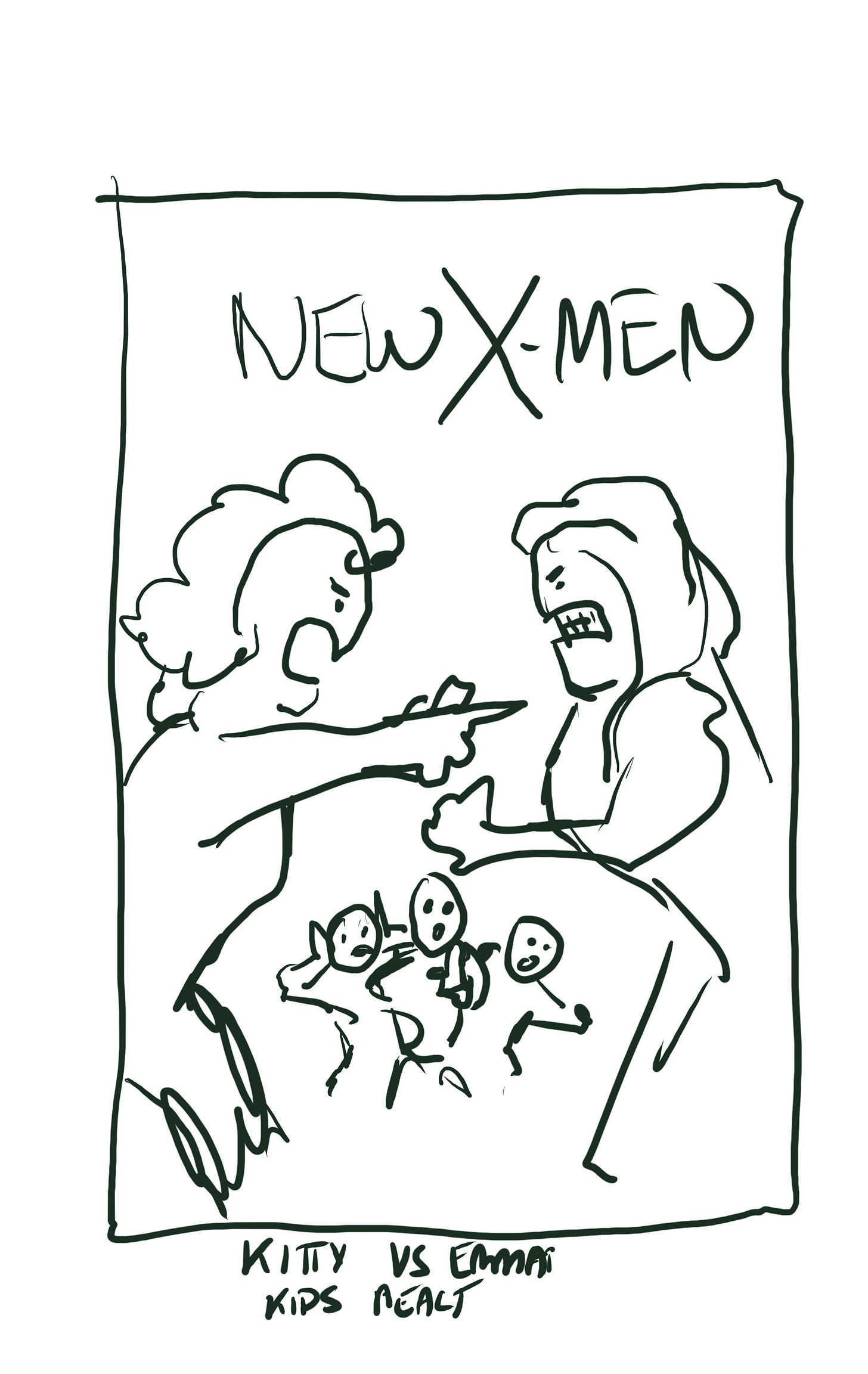

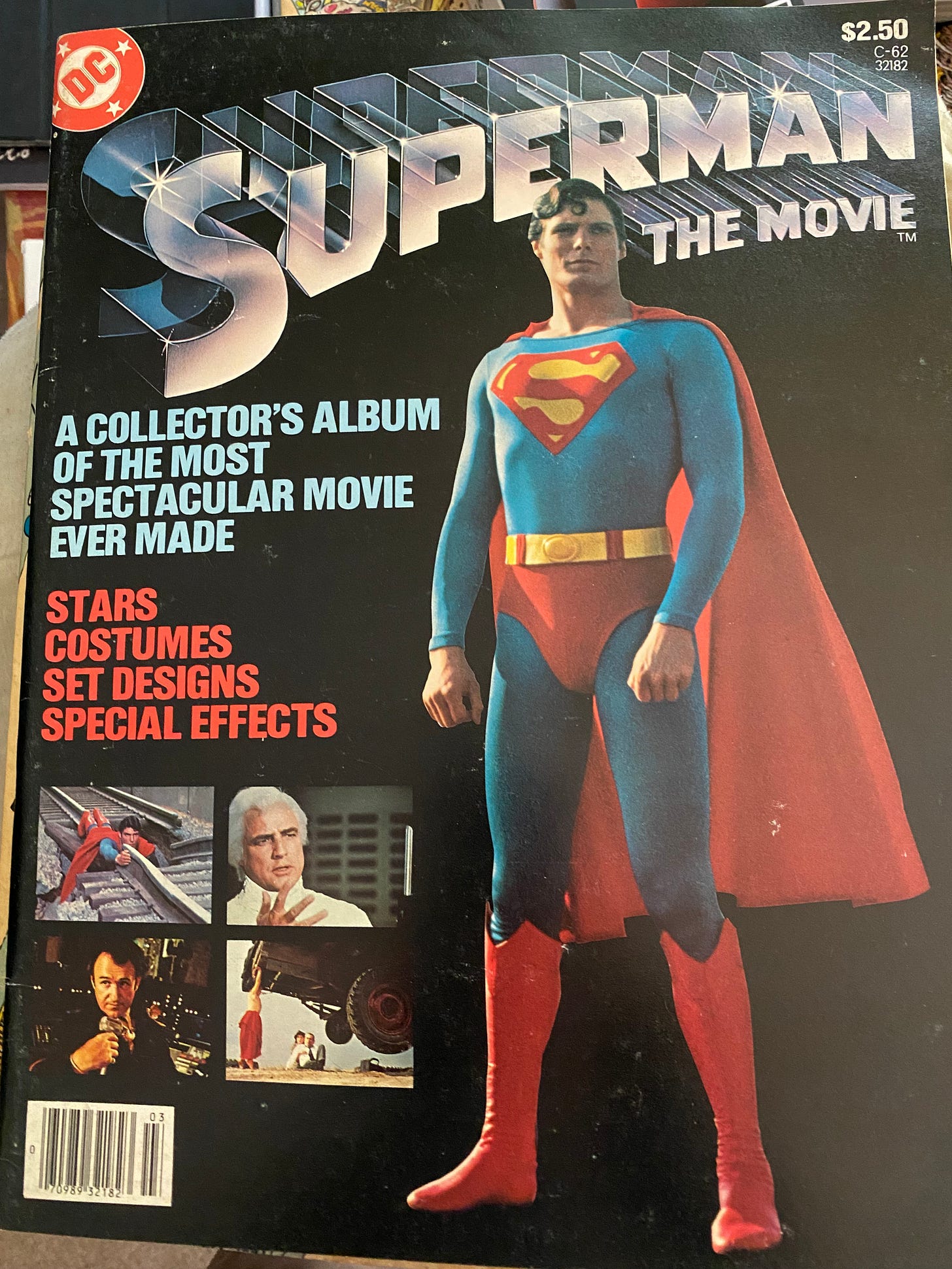
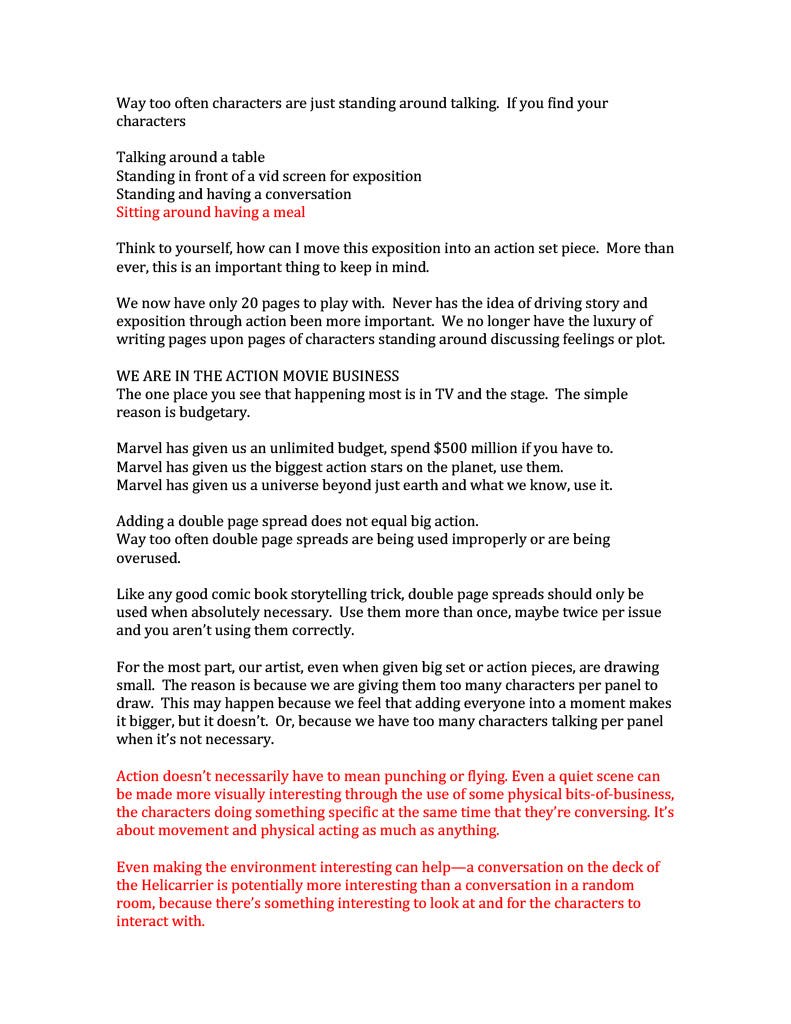
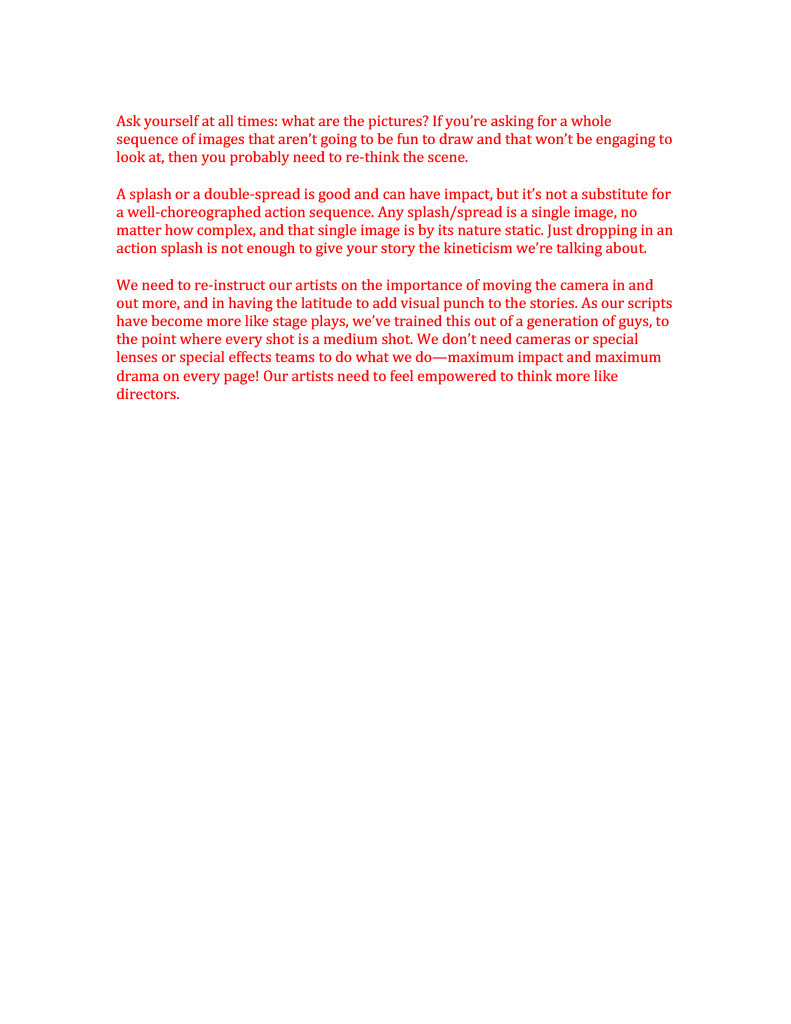
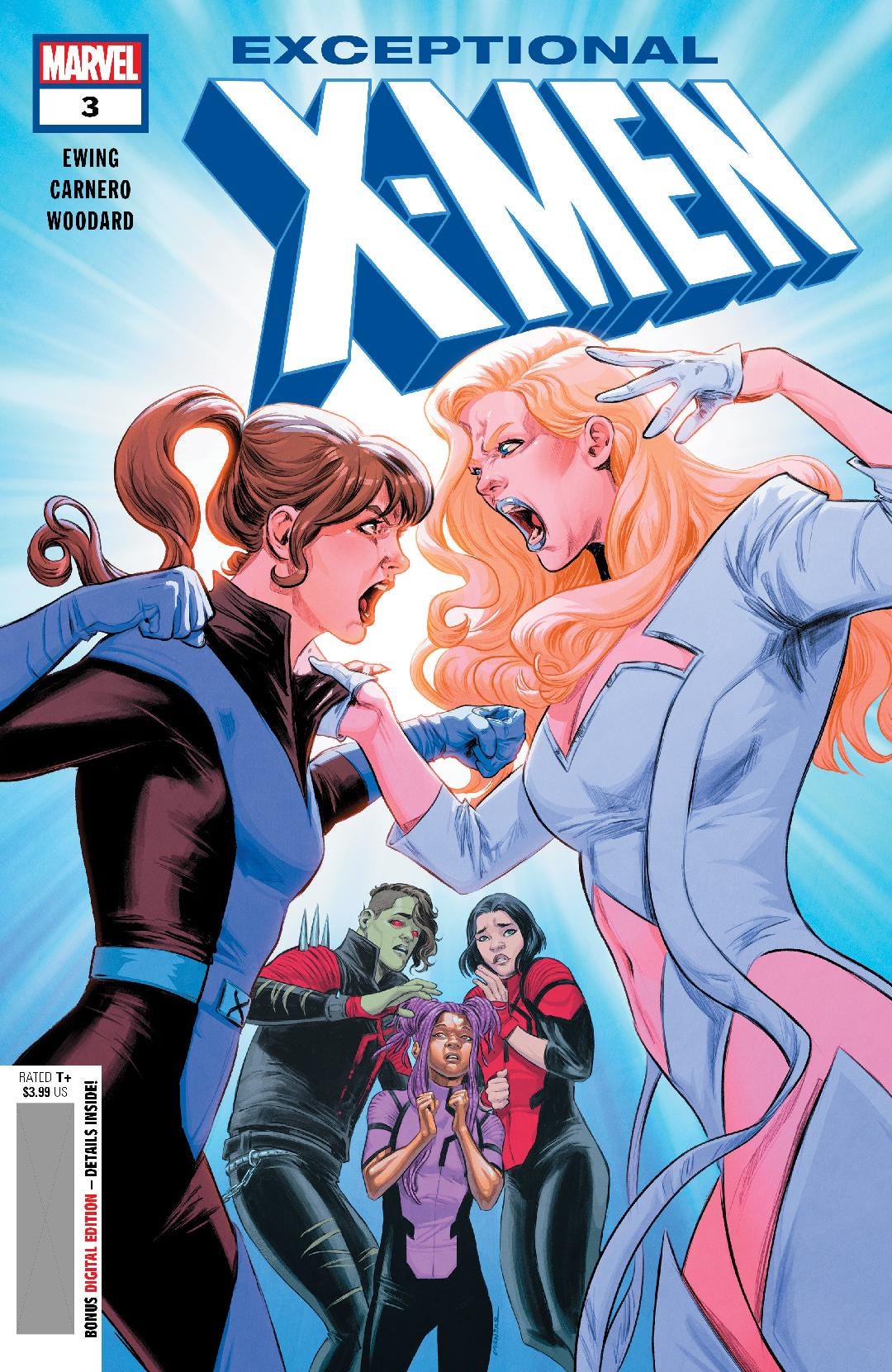
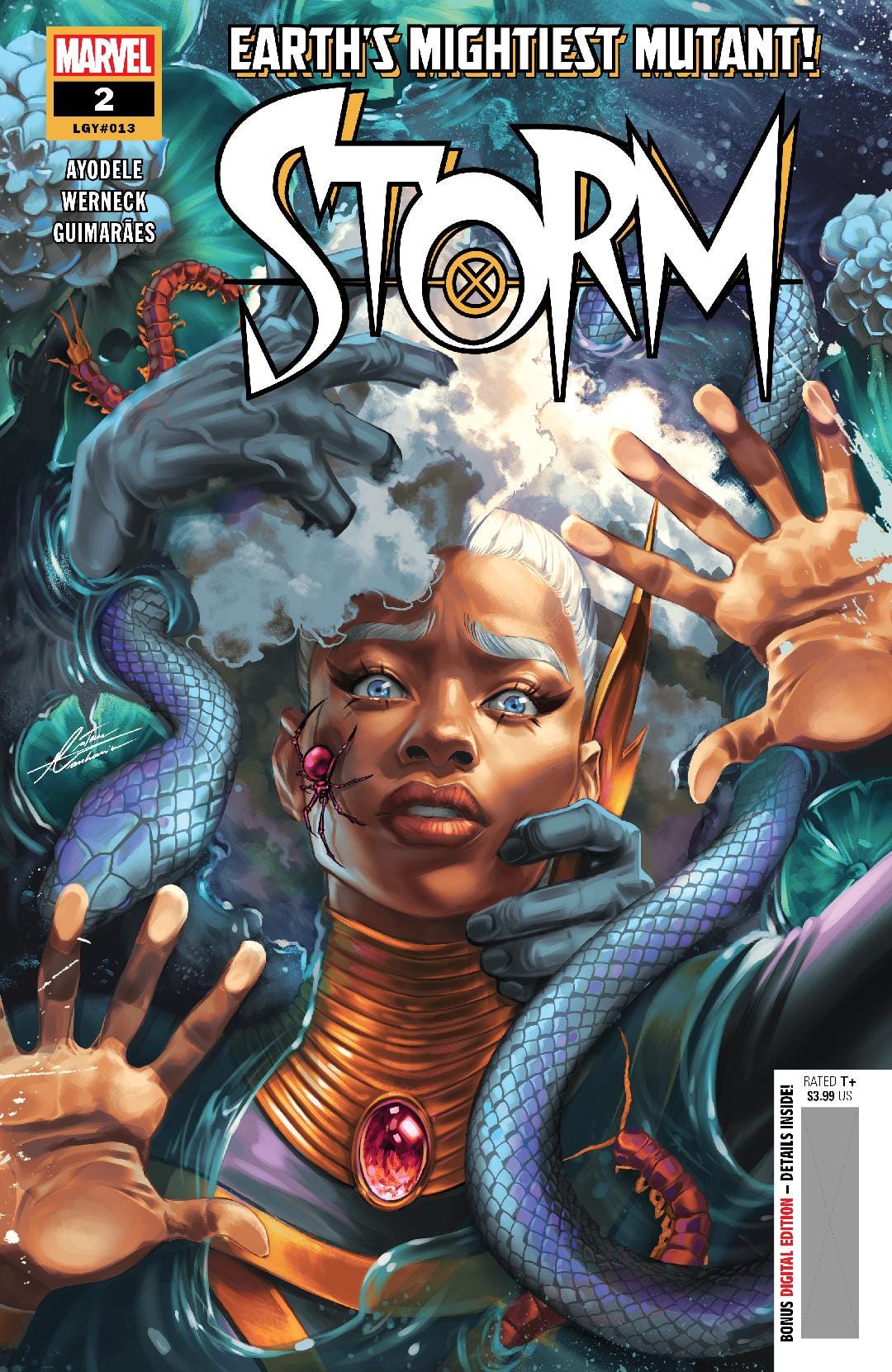
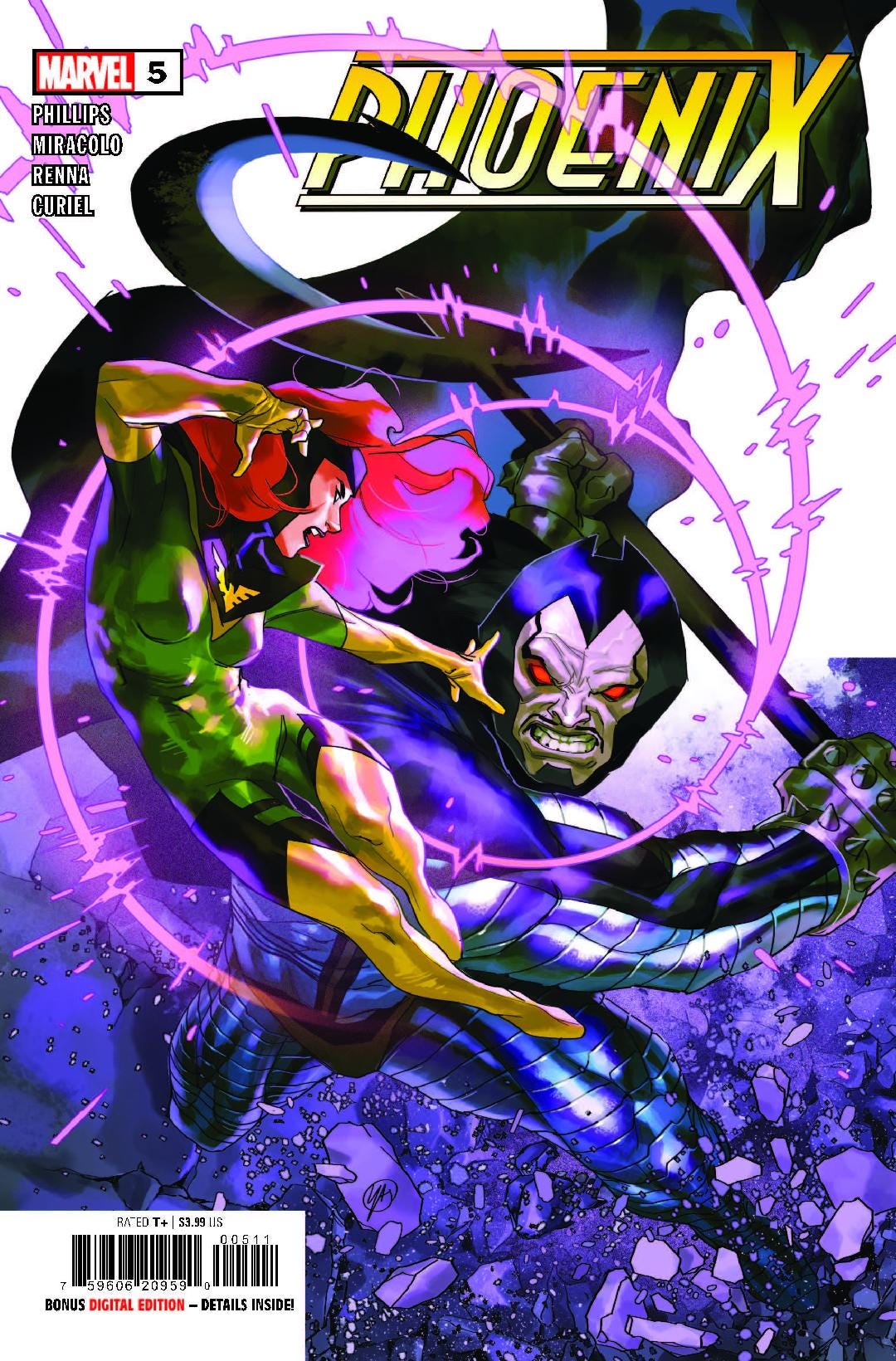
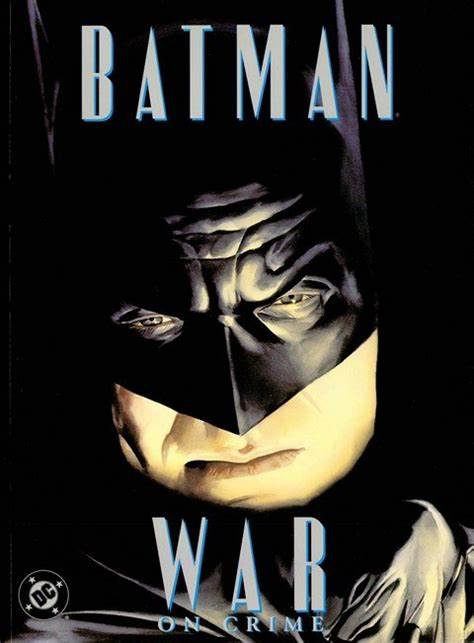
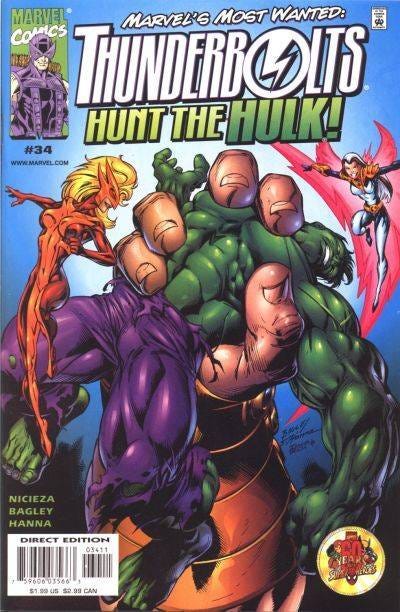
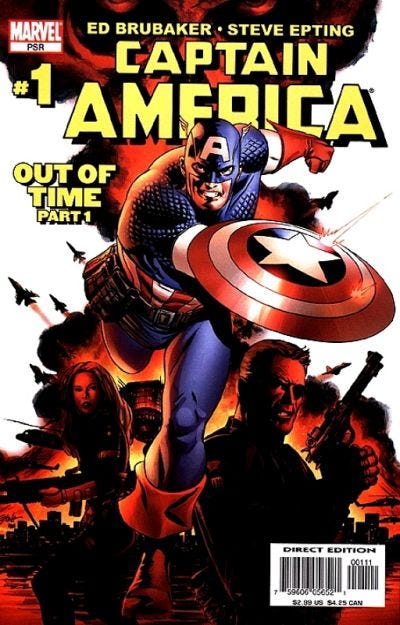
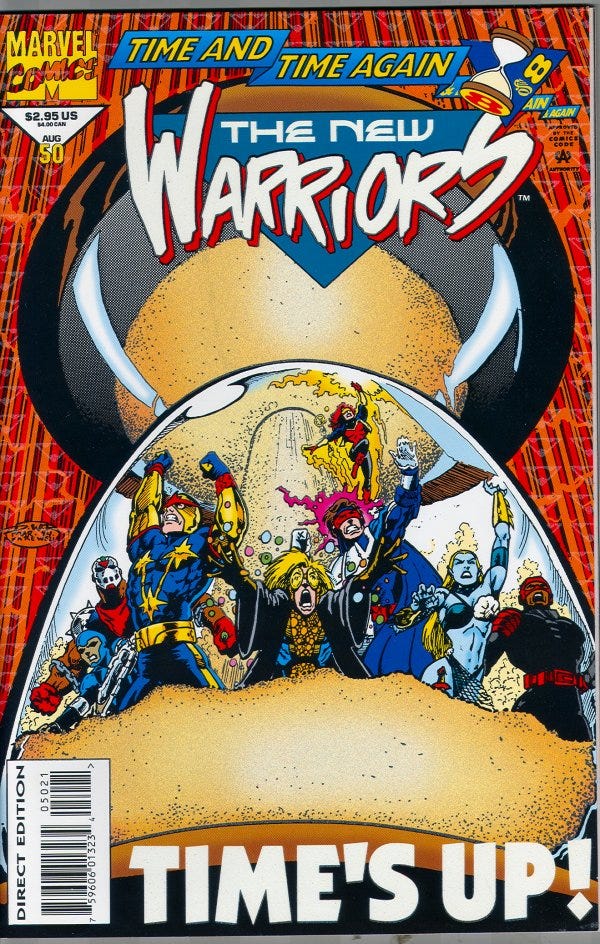

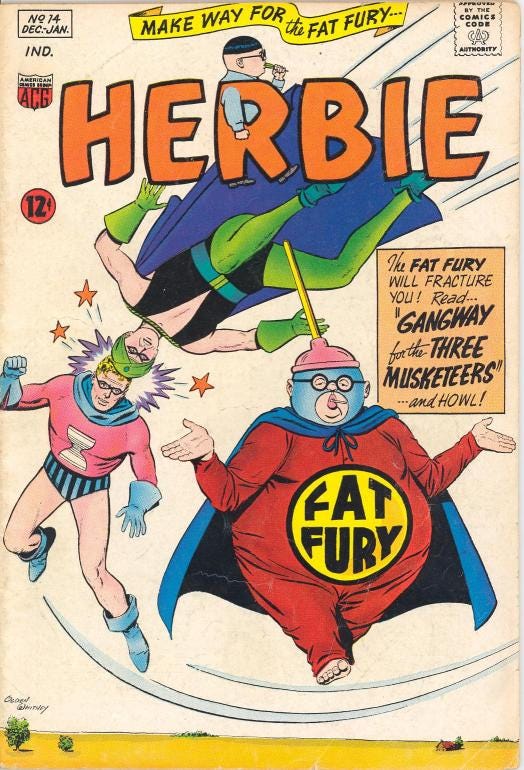
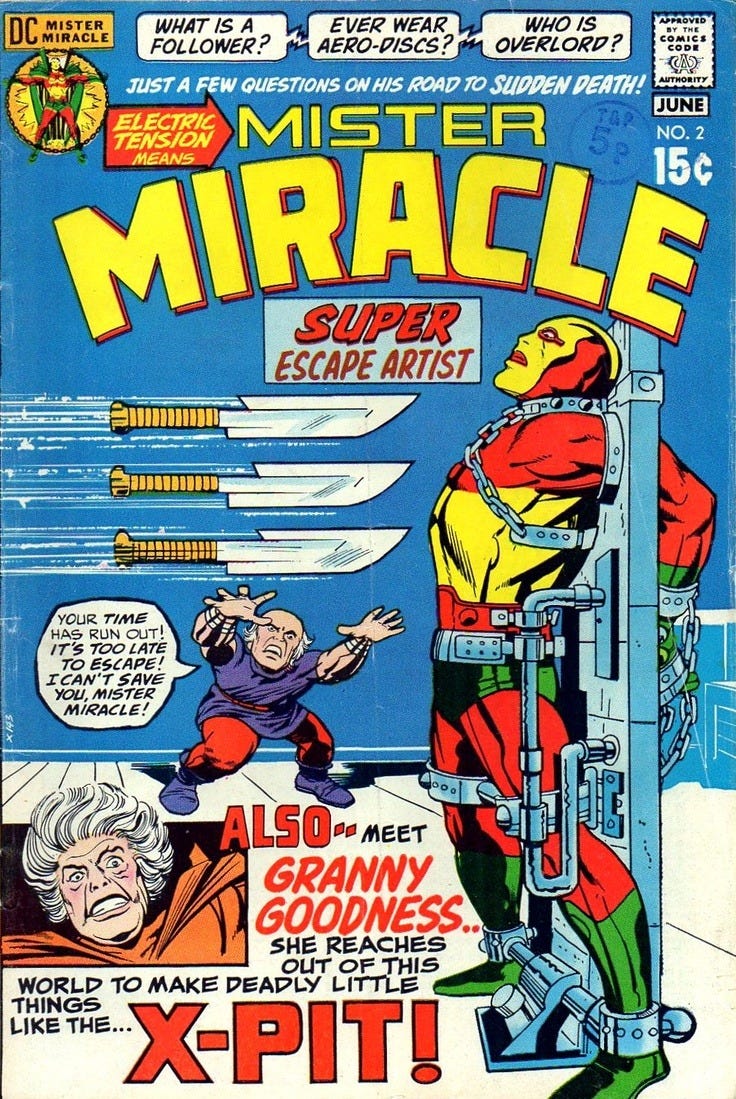
"To me, the essence of the original concept, the thing that made it distinctive and unique was the idea that these were young activist super heroes. In all honesty, having been foiled in my attempts to helm a NEW WARRIORS project over all the years since I last worked on the book in the 1990s, I pretty much migrated the guts of that core concept over to CHAMPIONS when that series launched under Mark Waid and Humberto Ramos. But I figured that was fair, as nobody who had done NEW WARRIORS in a few decades had ever come back to it."
I think another big part of why the Fabes/Bags NEW WARRIORS worked so well was that it felt like the Claremont X-Men in terms of the character drama and interrelationships, particularly the Claremont/Byrne run. Pacing-wise, emotion-wise, it had a very similar appeal, and readers responded to that. So despite the lead characters not being big names, the stories pulled readers in emotionally and made them want to see what was coming.
Mark and I did much the same thing on THUNDERBOLTS, and it worked there, too. There are a lot of books over the years that have attempted to recapture the style of that X-era, and most of them seemed to me to focus on surface stuff rather than the way the character drama played out, but it seems like it's the character drama that was the real hook.
Plus, if you're working with Mark Bagley on a team book, taking a Claremont/Byrne or Claremont/Paul Smith kind of approach works very nicely on the page.
"CAPTAIN AMERICA #1 was released on November 17, 2004 and was the beginning of the well-remembered Ed Brubaker and Steve Epting (and friends) run."
I was at least as opposed to Bucky coming back as you were, but this series hooked me right from the start, and I kept thinking, as Ed and Steve did things I absolutely would not have done with Cap, that they were absolutely the right way (or a right way, at least) to handle the character and the book. I've rarely been converted to a new approach that fast.
"In any case, when it came time to begin handing out assignments in the new group, Bob decided to give the NEW WARRIORS line to me. It consisted of three books: NEW WARRIORS, NOVA and NIGHT THRASHER. At the same time, a JUSTICE limited series was also running, so I got to bat clean-up on that."
This is also the point that you and I first started working together editorially, and that led to one of what was easily the two biggest boosts to my career. So even though I don't think I did especially notable work on NIGHT THRASHER (though I enjoyed writing the "Money Don't Buy" arc that you inherited in midstream), I'm very glad I was there when you arrived!
"And ten years ago, I wrote about this great Jack Kirby MISTER MIRACLE cover"
Even considering that comics characters can fit more words in while in the midst of swift action, Oberon's saying way too much here. Maybe it's because much of what he says is redundant, so it feels more like text cholesterol. But I agree that it's a terrific cover, even though the Sales L is not terribly well served here.
kdb
I also wanted to say how much I am enjoying the new Uncanny Xmen, as an old time fan with a full back issue collection ( a nightmare when I recently moved house) it’s scratching my itch.